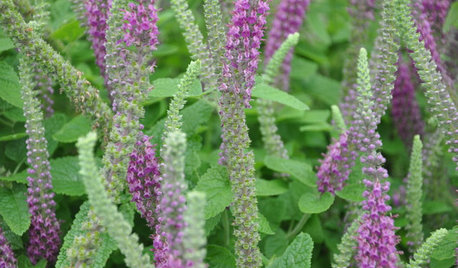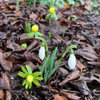What's in a name? Is the word grandiflora significant?
ritmatt
11 years ago
Related Stories

CONTRACTOR TIPSThe 4 Potentially Most Expensive Words in Remodeling
‘While you’re at it’ often results in change orders that quickly add up
Full Story
LIFEYou Said It: ‘Each Piece Has a Story’ and More Words From the Week
Whether beating paper to a pulp or hanging glass plates as shed windows, Houzzers showed off amazing ingenuity this week
Full Story
TREESGreat Design Plant: Southern Magnolia, Iconic U.S. Native
Massive, fragrant blooms and deep green leaves set Magnolia grandiflora apart from other large shade trees
Full Story
CONTEMPORARY HOMESHouzz Tour: Reading Shapes a Seattle Home
Written words drive the design of a house for aging in place, from a plethora of bookshelves to a personal word wall
Full Story
VALENTINE’S DAYSimple Ways to Express Sweet Nothings
A few items for the home to help you say those three precious words ('Let's get dessert?') to your special someone
Full Story
FEEL-GOOD HOME9 Smells You Actually Want in Your Home
Boost memory, enhance sleep, lower anxiety ... these scents do way more than just smell good
Full Story
ARCHITECTUREExplore Jim Olson's Art in Architecture
A new book celebrates a Northwest architect's ideas about space, perception, and the experience of living with nature
Full Story
FUN HOUZZA Tepee in the Trees Defies the Ordinary
This Pennsylvania tree house brings a family together, spawns adventures and respects the trees. Have a look
Full Story
REMODELING GUIDESWisdom to Help Your Relationship Survive a Remodel
Spend less time patching up partnerships and more time spackling and sanding with this insight from a Houzz remodeling survey
Full StorySponsored
Columbus Area's Luxury Design Build Firm | 17x Best of Houzz Winner!
More Discussions









ken_adrian Adrian MI cold Z5
ritmattOriginal Author
Related Professionals
Ashland Landscape Architects & Landscape Designers · Baltimore Landscape Architects & Landscape Designers · La Marque Landscape Architects & Landscape Designers · Middle River Landscape Architects & Landscape Designers · Aurora Landscape Contractors · Alpharetta Landscape Contractors · Cupertino Landscape Contractors · El Sobrante Landscape Contractors · Lyndhurst Landscape Contractors · Mashpee Landscape Contractors · Mastic Beach Landscape Contractors · Olympia Landscape Contractors · Secaucus Landscape Contractors · Weslaco Landscape Contractors · Palos Heights Landscape Contractorsmistascott
mistascott
ken_adrian Adrian MI cold Z5
flora_uk
ritmattOriginal Author
coolplantsguy
mistascott
mistascott
terrene
Kaveh Maguire Garden Design
Tiffany, purpleinopp Z8b Opp, AL
mistascott
terrene